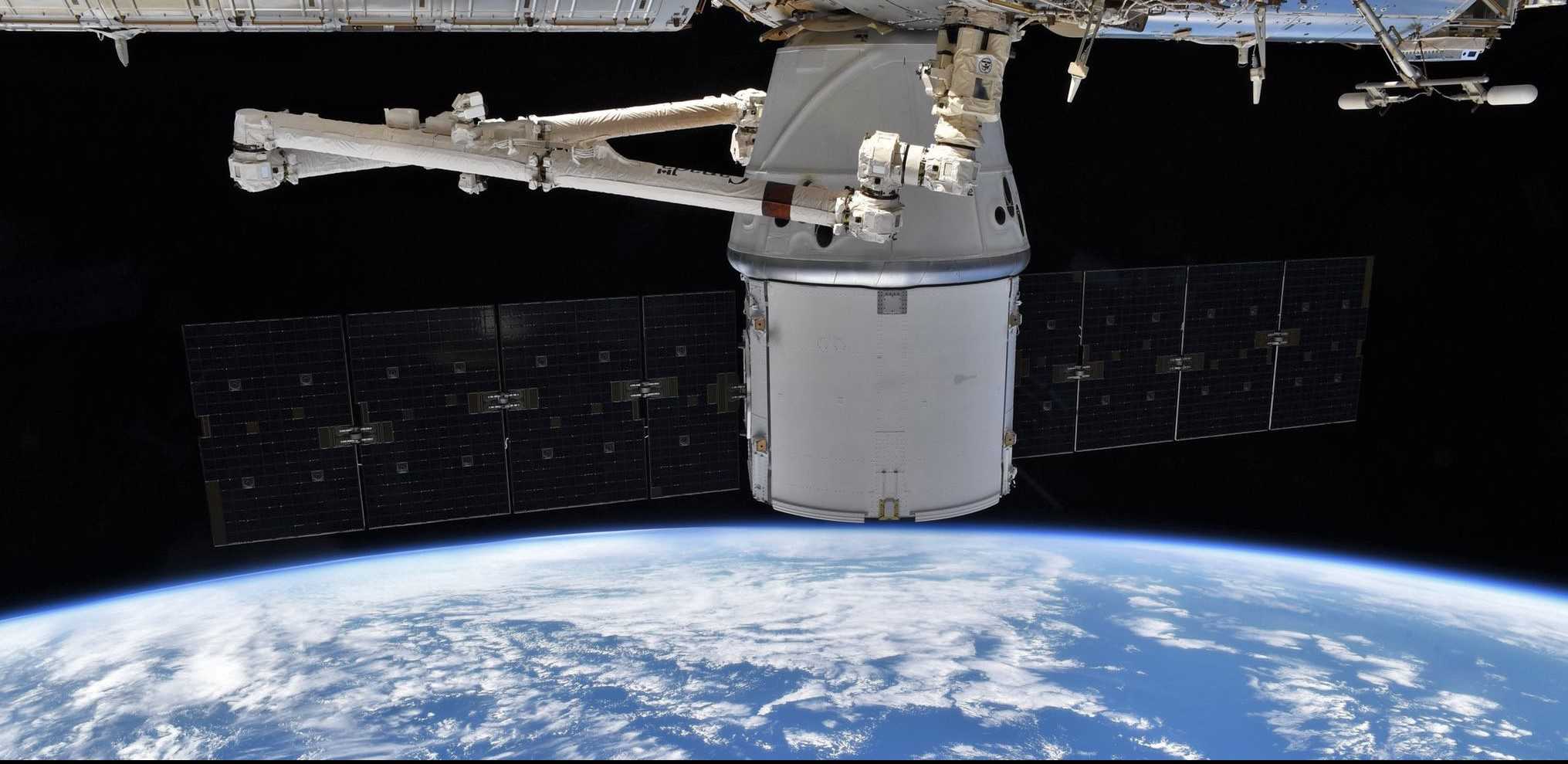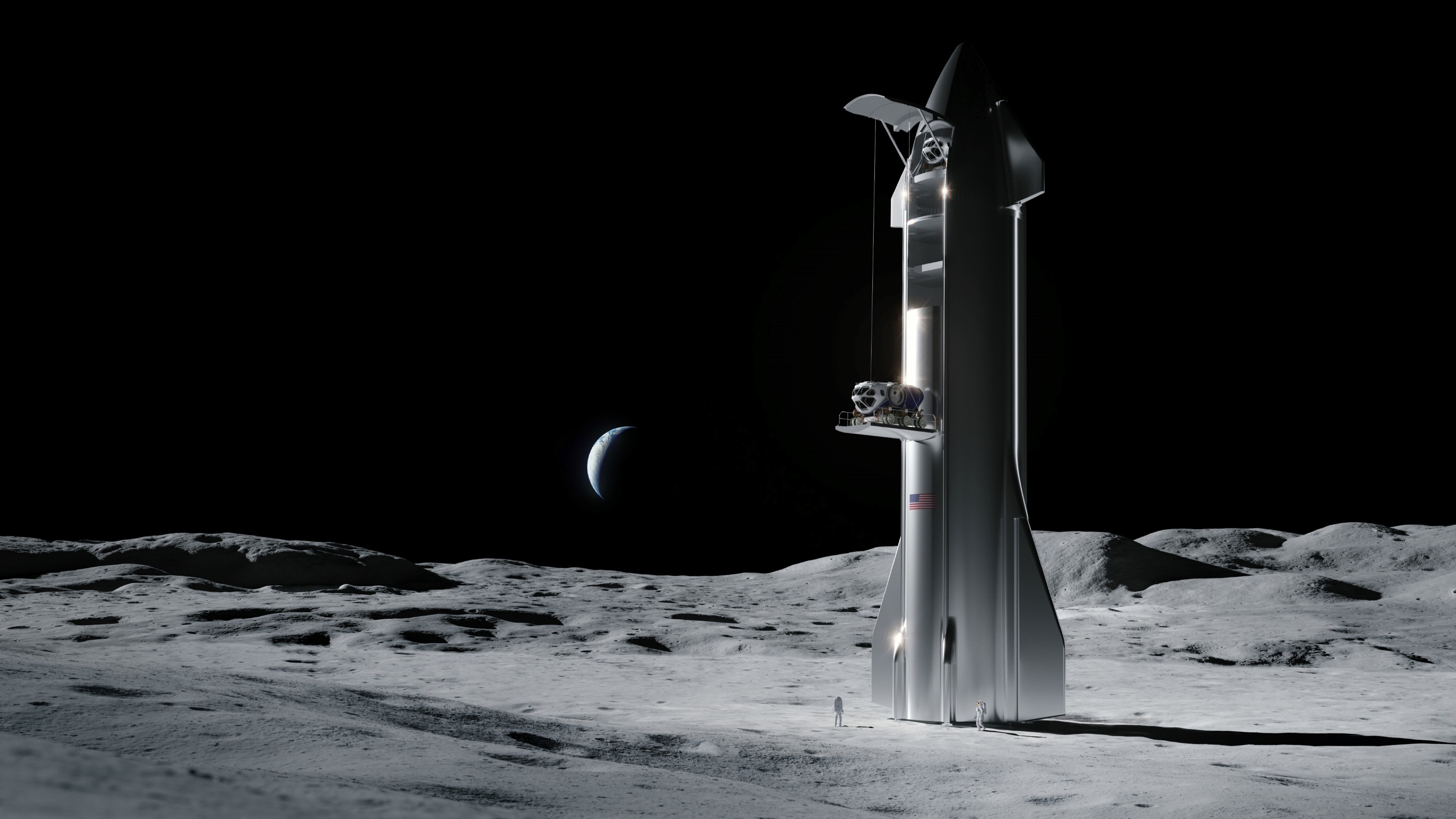News
SpaceX wins NASA contract to deliver cargo to Lunar Gateway moon outpost
SpaceX’s Dragon spacecraft has delivered cargo to the International Space Station, but soon it will carry goods to an orbit higher than the International Space Station: the lunar Gateway.
Agency officials announced Friday (March 27) that NASA selected SpaceX as the first commercial company to be contracted to deliver cargo to the upcoming Gateway. The California-based aerospace company will deliver cargo to lunar orbit, including research experiments, astronaut supplies, sample collection hardware, and more.
NASA has plans of returning to the moon, and an essential piece of architecture in that quest is a small space station, dubbed Gateway, that will orbit the moon. Construction on the lunar outpost is scheduled to begin in 2022, as part of the space agency’s larger effort to establish a long-term presence on the moon.
The moon will be a testbed to help the agency and its partners develop and test the technology needed for human missions to Mars. And the Gateway is a big part of that. The small space station will serve as a command post for both crewed and uncrewed excursions to the lunar surface. It will also serve as a facility for research experiments.
SpaceX will launch a variant of Dragon, optimized to carry more than 5 metric tons of cargo to Gateway in lunar orbit https://t.co/NdJaFU1xSD
— SpaceX (@SpaceX) March 27, 2020
Currently, SpaceX uses its Falcon 9 rocket to ferry cargo Dragon spacecraft to the space station. Each craft is capable of transporting around six metric tons (or 13,200 lbs.) to low-Earth orbit. After delivering its cargo, Dragon typically remains attached to the ISS for about a month before returning to Earth.
For the upcoming lunar missions, SpaceX proposed using its Falcon Heavy rocket to ferry a modified version of its Dragon spacecraft to the future outpost. The spacecraft, called Dragon XL, would deliver more than five metric tons of cargo, and the craft would stay docked for up to 12 months.

“Returning to the moon and supporting future space exploration requires affordable delivery of significant amounts of cargo,” said Gwynne Shotwell, SpaceX president, and COO. “Through our partnership with NASA, SpaceX has been delivering scientific research and critical supplies to the International Space Station since 2012, and we are honored to continue the work beyond Earth’s orbit and carry Artemis cargo to the Gateway.”
NASA first announced it was looking for companies to deliver cargo to the upcoming lunar station last summer; SpaceX is the first to be awarded a contract.
“This contract award is another crucial piece of our plan to return to the moon sustainably,” said NASA Administrator Jim Bridenstine. “The Gateway is the cornerstone of the long-term Artemis architecture, and this deep space commercial cargo capability integrates yet another American industry partner into our plans for human exploration at the moon in preparation for a future mission to Mars.”

Although SpaceX is the first, NASA is expected to announce at least one more company that will deliver cargo to the Gateway. To that end, the agency set aside a total of $7 billion (to be spent over a period of 12 to 15 years) for the delivery services. Each company selected will be guaranteed at least two missions.
NASA’s goal is to return to the moon by 2024 and to do so sustainably. To that end, the agency is relying on the commercial industry to help out. So far, the space agency has already awarded contracts for the Gateway’s power and propulsion element as well as a small habitat module.
But that’s not all; the space agency is also taking proposals for landing services. Last November, SpaceX announced its interest and that it planned to use its Starship to deliver robotic landers to the lunar surface. Starship was originally designed to ferry people to Mars, but like the rest of the lunar program, the first step for it could be delivering payloads to the moon.

Elon Musk
Elon Musk’s X will start using a Tesla-like software update strategy
The initiative seems designed to accelerate updates to the social media platform, while maintaining maximum transparency.

Elon Musk’s social media platform X will adopt a Tesla-esque approach to software updates for its algorithm.
The initiative seems designed to accelerate updates to the social media platform, while maintaining maximum transparency.
X’s updates to its updates
As per Musk in a post on X, the social media company will be making a new algorithm to determine what organic and advertising posts are recommended to users. These updates would then be repeated every four weeks.
“We will make the new 𝕏 algorithm, including all code used to determine what organic and advertising posts are recommended to users, open source in 7 days. This will be repeated every 4 weeks, with comprehensive developer notes, to help you understand what changed,” Musk wrote in his post.
The initiative somewhat mirrors Tesla’s over-the-air update model, where vehicle software is regularly refined and pushed to users with detailed release notes. This should allow users to better understand the details of X’s every update and foster a healthy feedback loop for the social media platform.
xAI and X
X, formerly Twitter, has been acquired by Elon Musk’s artificial intelligence startup, xAI last year. Since then, xAI has seen a rapid rise in valuation. Following the company’s the company’s upsized $20 billion Series E funding round, estimates now suggest that xAI is worth tens about $230 to $235 billion. That’s several times larger than Tesla when Elon Musk received his controversial 2018 CEO Performance Award.
As per xAI, the Series E funding round attracted a diverse group of investors, including Valor Equity Partners, Stepstone Group, Fidelity Management & Research Company, Qatar Investment Authority, MGX, and Baron Capital Group, among others. Strategic partners NVIDIA and Cisco Investments also continued support for building the world’s largest GPU clusters.
News
Tesla FSD Supervised wins MotorTrend’s Best Driver Assistance Award
The decision marks a notable reversal for the publication from prior years, with judges citing major real-world improvements that pushed Tesla’s latest FSD software ahead of every competing ADAS system.

Tesla’s Full Self-Driving (Supervised) system has been named the best driver-assistance technology on the market, earning top honors at the 2026 MotorTrend Best Tech Awards.
The decision marks a notable reversal for the publication from prior years, with judges citing major real-world improvements that pushed Tesla’s latest FSD software ahead of every competing ADAS system. And it wasn’t even close.
MotorTrend reverses course
MotorTrend awarded Tesla FSD (Supervised) its 2026 Best Tech Driver Assistance title after extensive testing of the latest v14 software. The publication acknowledged that it had previously criticized earlier versions of FSD for erratic behavior and near-miss incidents, ultimately favoring rivals such as GM’s Super Cruise in earlier evaluations.
According to MotorTrend, the newest iteration of FSD resolved many of those shortcomings. Testers said v14 showed far smoother behavior in complex urban scenarios, including unprotected left turns, traffic circles, emergency vehicles, and dense city streets. While the system still requires constant driver supervision, judges concluded that no other advanced driver-assistance system currently matches its breadth of capability.
Unlike rival systems that rely on combinations of cameras, radar, lidar, and mapped highways, Tesla’s FSD operates using a camera-only approach and is capable of driving on city streets, rural roads, and freeways. MotorTrend stated that pure utility, the ability to handle nearly all road types, ultimately separated FSD from competitors like Ford BlueCruise, GM Super Cruise, and BMW’s Highway Assistant.
High cost and high capability
MotorTrend also addressed FSD’s pricing, which remains significantly higher than rival systems. Tesla currently charges $8,000 for a one-time purchase or $99 per month for a subscription, compared with far lower upfront and subscription costs from other automakers. The publication noted that the premium is justified given FSD’s unmatched scope and continuous software evolution.
Safety remained a central focus of the evaluation. While testers reported collision-free operation over thousands of miles, they noted ongoing concerns around FSD’s configurable driving modes, including options that allow aggressive driving and speeds beyond posted limits. MotorTrend emphasized that, like all Level 2 systems, FSD still depends on a fully attentive human driver at all times.
Despite those caveats, the publication concluded that Tesla’s rapid software progress fundamentally reshaped the competitive landscape. For drivers seeking the most capable hands-on driver-assistance system available today, MotorTrend concluded Tesla FSD (Supervised) now stands alone at the top.
News
Elon Musk’s Grokipedia surges to 5.6M articles, almost 79% of English Wikipedia
The explosive growth marks a major milestone for the AI-powered online encyclopedia, which was launched by Elon Musk’s xAI just months ago.

Elon Musk’s Grokipedia has grown to an impressive 5,615,201 articles as of today, closing in on 79% of the English Wikipedia’s current total of 7,119,376 articles.
The explosive growth marks a major milestone for the AI-powered online encyclopedia, which was launched by Elon Musk’s xAI just months ago. Needless to say, it would only be a matter of time before Grokipedia exceeds English Wikipedia in sheer volume.
Grokipedia’s rapid growth
xAI’s vision for Grokipedia emphasizes neutrality, while Grok’s reasoning capabilities allow for fast drafting and fact-checking. When Elon Musk announced the initiative in late September 2025, he noted that Grokipedia would be an improvement to Wikipedia because it would be designed to avoid bias.
At the time, Musk noted that Grokipedia “is a necessary step towards the xAI goal of understanding the Universe.”
Grokipedia was launched in late October, and while xAI was careful to list it only as Version 0.1 at the time, the online encyclopedia immediately earned praise. Wikipedia co-founder Larry Sanger highlighted the project’s innovative approach, noting how it leverages AI to fill knowledge gaps and enable rapid updates. Netizens also observed how Grokipedia tends to present articles in a more objective manner compared to Wikipedia, which is edited by humans.
Elon Musk’s ambitious plans
With 5,615,201 total articles, Grokipedia has now grown to almost 79% of English Wikipedia’s article base. This is incredibly quick, though Grokipedia remains text-only for now. xAI, for its part, has now updated the online encyclopedia’s iteration to v0.2.
Elon Musk has shared bold ideas for Grokipedia, including sending a record of the entire knowledge base to space as part of xAI’s mission to preserve and expand human understanding. At some point, Musk stated that Grokipedia will be renamed to Encyclopedia Galactica, and it will be sent to the cosmos.
“When Grokipedia is good enough (long way to go), we will change the name to Encyclopedia Galactica. It will be an open source distillation of all knowledge, including audio, images and video. Join xAI to help build the sci-fi version of the Library of Alexandria!” Musk wrote, adding in a later post that “Copies will be etched in stone and sent to the Moon, Mars and beyond. This time, it will not be lost.”








